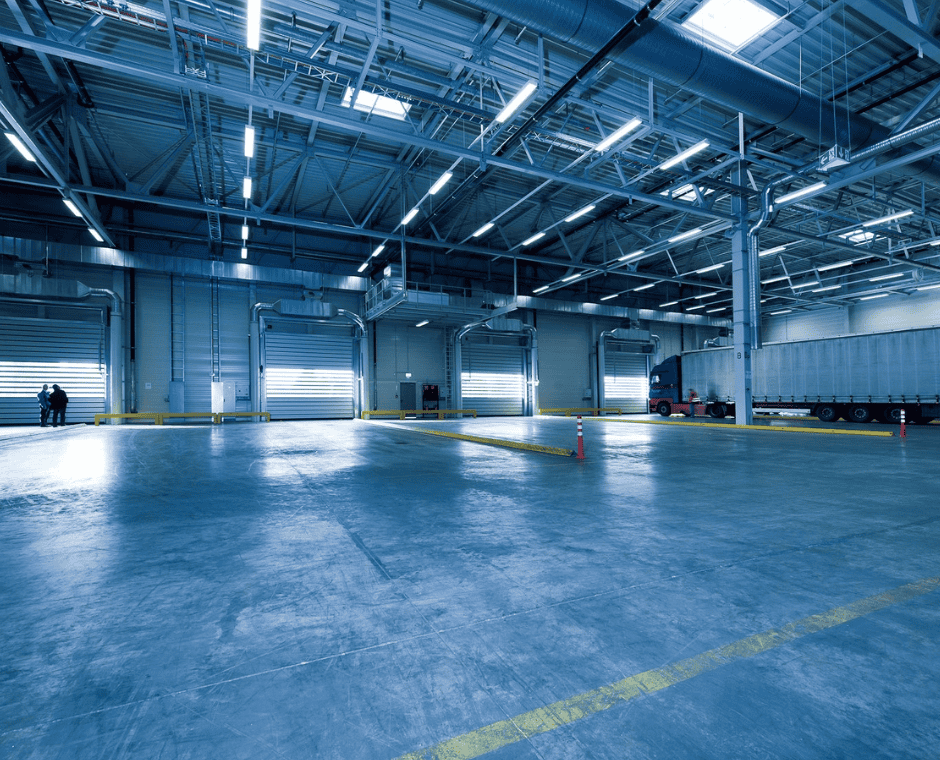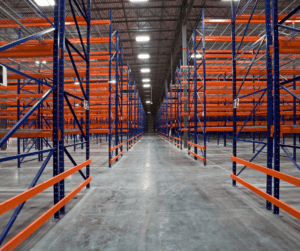Best Boat Storage Options: 2025 Complete Guide
- June 15, 2025
- Cheap storage near me
Storing a boat is a critical part of maintaining its value and usability. With millions of boats on U.S. waterways and…
Read More
The ecommerce industry has exploded in recent years, with global ecommerce sales projected to reach $5 trillion by 2021. As online stores grow, one major challenge they face is finding enough warehouse space to store their growing inventory. Warehouse space allows ecommerce companies to efficiently package and ship products to customers. However, securing affordable warehouse space can be a difficult task.
In this article, we’ll discuss the problems ecommerce companies have with storage, where to find warehouse spaces, and how to rent warehouse space for your company. We’ll cover the benefits of using warehouse space versus other storage options, factors to consider when choosing a warehouse, and tips for negotiating a warehouse lease. Whether you’re just starting out or looking to expand, read on for a comprehensive guide to finding the ideal warehouse space for your ecommerce business.
E-commerce companies face unique challenges when it comes to storing their products and inventory. As online sales grow, companies often find their onsite storage space cannot keep up with rapidly expanding inventory needs. Warehousing products offsite provides more room to stock full product lines.
Storing inventory onsite at a company’s headquarters or retail locations has significant limitations. Available space fills up quickly, especially for high-growth sellers. Onsite storage space tends to be very expensive per square foot. Property values are usually higher in areas where companies operate stores or offices.
E-commerce order fulfillment runs most efficiently from a large, dedicated warehouse designed for storage and order processing. Keeping products organized on shelves and efficiently moving them for packing and shipping requires ample, open floor space. A disorganized warehouse bogs down order fulfillment speed and accuracy.

Renting warehouse space offers several advantages for ecommerce companies over storing inventory onsite. The key benefits include:
Renting warehouse space provides the room, infrastructure, and cost savings that ecommerce companies need for efficient order fulfillment. The benefits of faster shipping, better organization, and lower overhead make warehouses an essential solution for inventory storage and order processing.
E-commerce companies have a few good options when it comes to finding warehouse space to store inventory and fulfill orders:
Industrial parks located near major metropolitan areas are a prime spot to find warehouse space. Being near a large city provides easy access to infrastructure like highways, airports, rail lines and a large pool of potential workers. Many industrial parks have multiple vacancies and a range of warehouse sizes to choose from.
Another option is to move into a vacant big box retail space, which can provide 50,000 square feet or more under one roof. The layout is already optimized for retail operations. Some modifications like adding a shipping area may be needed to convert into a warehouse and fulfillment center.
Rather than taking on a warehouse lease, e-commerce companies can rent space from a third-party logistics (3PL) provider. 3PLs operate large warehouses and can allocate space for another company to store pallets of inventory. They also provide services like receiving and shipping items on the e-commerce company’s behalf. This allows the e-commerce business to focus on core operations.
There is a growing market for online marketplaces in the commercial real estate industry. It’s easier than ever to research and find a warehouse space online that fits your ecommerce needs. Some of the top online marketplaces to find Warehouse spaces are the following:
When selecting a warehouse space for your ecommerce business, there are several key factors to take into account:
Location – Proximity to your target demographic is crucial, as you want to minimize shipping times and costs. Look at population density maps and consider a warehouse near major highways or shipping routes. Being close to your suppliers can also be advantageous.
Price – Rent per square foot varies greatly by region, so balance costs with your space needs. Also factor in tax incentives or credits for leasing in certain areas. However, don’t sacrifice necessities just to save money.
Size – Project your inventory growth over the next few years and lease a space that can accommodate that expansion. Having room to scale up operations is ideal. You also need enough space for efficient workflow and inventory management. Consider height for vertical storage.
Access – Easy access for receiving supplier deliveries and shipping out orders is vital. Look for large loading docks, wide drive-in doors, and room for trucks to maneuver. Check that access roads can accommodate tractor trailers. Proximity to major highways and airports helps too.
Choosing the right warehouse space is a crucial decision for ecommerce businesses. Analyzing these key factors will help you select a location that meets your budget while supporting your company’s growth and logistics needs.
When it comes to finding warehouse space, ecommerce companies have a few options to consider:
One option is to lease an entire warehouse. This allows you to fully customize the space to meet your specific inventory storage and order fulfillment needs. Having full control over the warehouse layout, dock doors, material handling equipment, and more enables maximum efficiency. Leasing an entire warehouse also provides complete security and privacy for your operations.
However, leasing an entire warehouse requires a major upfront investment and ongoing expenses. You need enough inventory volume and sales revenue to justify the costs. Leasing an entire warehouse is best suited for large, established ecommerce companies.
For many small or mid-sized online retailers, leasing a portion of a warehouse or fulfillment center is ideal. With this approach, you share warehouse space with other companies to reduce costs. The provider handles leasing the facility, equipment, staffing, and more so you can focus on your core business.
Warehouse space is leased on a per pallet or square footage basis. You only pay for the amount of space you need, with the flexibility to expand later. Multi-client warehouses also offer affordable solutions for overflow storage and to handle peak seasons or temporary spikes in inventory.
Some third-party logistics (3PL) providers offer on-demand overflow warehouse space. This allows you to temporarily rent extra storage as needed for seasonal inventory, new product launches, or unexpected spikes in sales.
On-demand warehouse space brings complete flexibility. You pay only for the temporary extra space required, without any long-term leases or commitments. It provides an affordable way to handle peaks and valleys in inventory requirements.

When negotiating a warehouse lease, there are several key factors to consider:
Length of Lease Term
The length of the lease term is an important consideration. Many warehouse leases are 3-5 years long. A shorter lease provides more flexibility, while a longer lease may get a lower rate per square foot. Consider your expected business growth and inventory needs when deciding on lease length.
Price Per Square Foot
The price per square foot is where you can really negotiate cost savings. Average warehouse rates range from $4-12 per square foot depending on the location and class of the building. Be sure to understand what’s included in the base rent rate (e.g. utilities, maintenance) and negotiate the best price per square foot you can get.
Responsibility for Maintenance/Repairs
Find out if maintenance and repairs are the landlord’s responsibility or if you’ll be expected to cover some or all of these costs. Things like HVAC, lighting, plumbing issues, and parking lot repairs can add up. Try to limit your responsibilities to internal systems only.
Flexibility for Growth
As your ecommerce business grows, you’ll likely need more warehouse space. Negotiating flexibility to expand your footprint in the same warehouse or options to move into larger spaces in the same facility can be valuable. Outline expansion needs upfront so they can be worked into the lease terms.
Taking the time to negotiate the best possible lease terms will pay off in cost savings and flexibility as your ecommerce operations scale up. Focus the discussion on the core factors like lease length, price, maintenance responsibility, and growth flexibility to get the best warehouse deal.
After signing a lease, you’ll need to build out the warehouse space to make it functional for your ecommerce operations. Some key elements to consider:
Installing racks and shelving is crucial for maximizing vertical storage space. Pallet racks are commonly used in warehouses to store pallets of inventory. Shelving units like gondolas are great for holding smaller items. Optimize your layout to make the best use of your warehouse’s cubic footage.
You’ll need material handling equipment like forklifts, pallet jacks and conveyor systems to move inventory efficiently. Forklifts allow workers to lift pallets to higher racks. Pallet jacks help transport palletized goods. And conveyors create an automated system to move packages.
Design your warehouse layout to optimize order fulfillment workflows. Zones for receiving, storage, picking and shipping help streamline processes. Well-organized inventory placement and clear signage also boost efficiency. Consider implementing warehouse management system (WMS) software.
Proper lighting, ventilation and temperature control creates a safe, comfortable work environment. LED lights provide cost-effective illumination. Heating and cooling systems maintain optimal temps. And good air circulation prevents mold and dust buildup. Investing in climate control protects your inventory too.

Efficiently managing warehouse operations is critical for ecommerce companies. Here are some key considerations:
A warehouse management system (WMS) software tracks inventory levels, orders, shipments and stock locations in real time. This provides visibility into what products are in stock, where they are located and when they need to be replenished or shipped out. A WMS can significantly improve accuracy and speed up order fulfillment.
Establish efficient processes for picking, packing and shipping orders to meet customer expectations and service level agreements. Consider workflow, equipment needs, staffing and quality control checks. For example, implement barcode scanning, carton optimization, and automated packing stations. Streamline processes by eliminating bottlenecks.
Hire warehouse staff suitable for the physical nature of the work. Offer training on safety procedures, equipment operation, inventory management and order processing workflows. Evaluate employee productivity and accuracy with performance metrics. Cross train staff on multiple functions to allow for flexibility in assignments.
Follow OSHA guidelines and implement safety policies such as proper equipment operation, accident reporting, hazard communications, personal protective equipment, and air quality monitoring. Conduct safety inspections and address potential risks. Ensure aisles and exits are clear of obstructions. Promote a culture of safety through training, incentives and accountability at all levels.

Warehouse space is a critical component of any ecommerce business’s operations and success. As we’ve covered, finding the right warehouse that meets your storage, inventory, fulfillment, and logistics needs is essential. The problems that ecommerce companies face with product storage and inventory management can be alleviated by securing adequate warehouse space.
There are many factors to consider when choosing a warehouse, from location and size to features and price. Taking the time to research options, visit potential spaces, and negotiate favorable lease terms will pay off in the long run. The warehouse you choose will directly impact your costs, efficiency, and ability to scale your ecommerce business over time.
In summary, the key points to remember are:
Finding the optimal warehouse space that aligns with your ecommerce operations and strategy is crucial. This investment in infrastructure and logistics will allow your business to successfully store, manage, and ship products to customers in a timely and cost-effective manner.
Join The Discussion